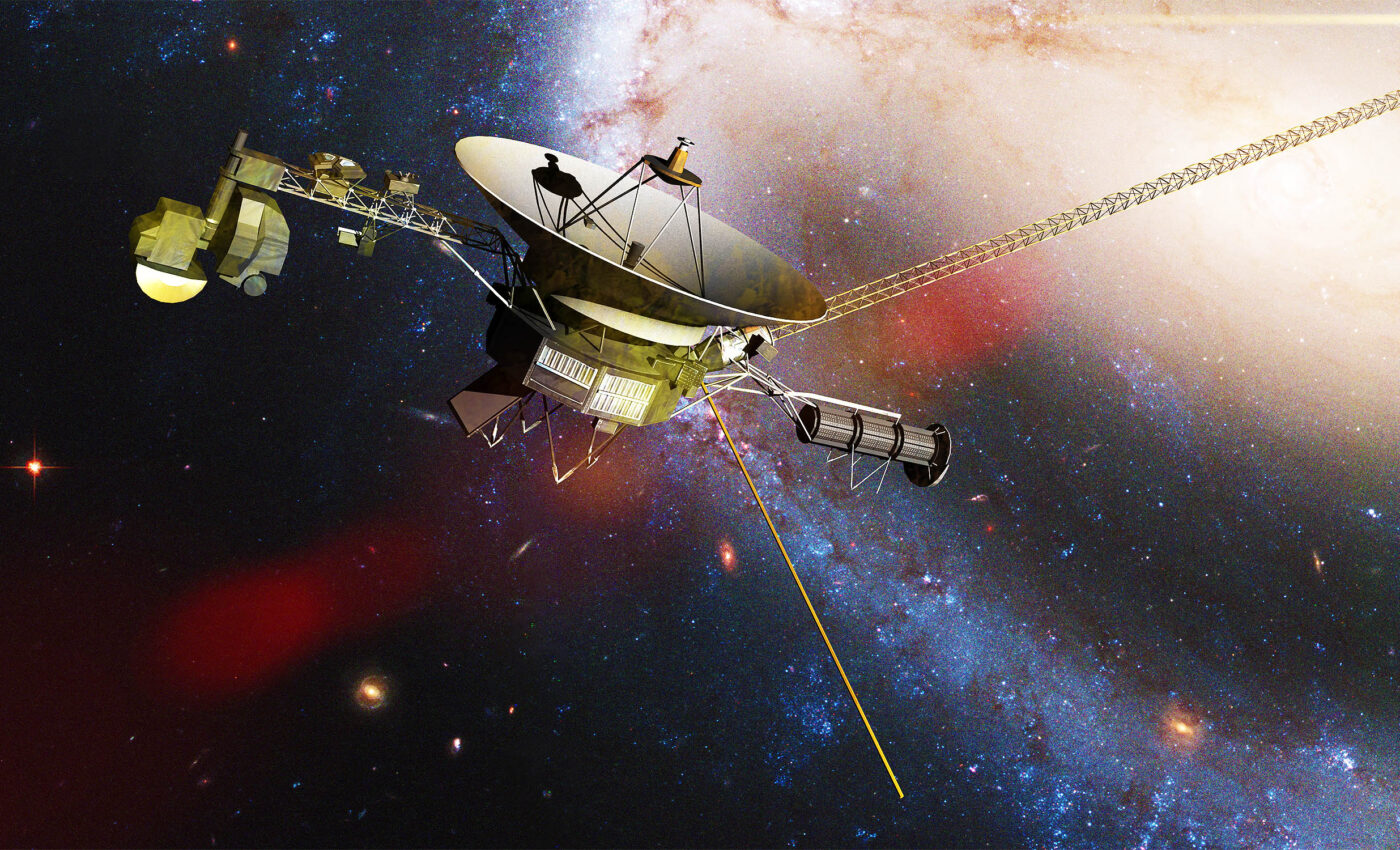
Voyager spacecraft are fighting to survive constant cosmic hostility
In the vast, uncharted expanse of interstellar space, two intrepid spacecraft, Voyager 1 and 2, are pushing the boundaries of human exploration.
Launched nearly half a century ago, these robotic pioneers have ventured beyond the protective bubble of our sun, the heliosphere, into a realm where no human-made machine has gone before. But this daring journey comes with a price.
Cosmic “bullets” pummeling Voyager spacecraft
Out in interstellar space, Voyager 1 and 2 face a relentless barrage of high-speed particles known as galactic cosmic rays. These tiny, charged particles, accelerated to near light-speed by exploding stars, pose a constant threat to the spacecraft’s aging electronics.
“We are dodging bullets out there,” says Alan Cummings, a cosmic-ray physicist at Caltech who has been involved with the Voyager mission since its inception.
These “bullets” are not to be taken lightly. In 2010, a cosmic ray likely tripped part of Voyager 2‘s memory, causing it to send back gibberish to Earth.
More recently, Voyager 1 went silent for five months, a worrisome incident that may also have been triggered by a cosmic ray damaging a computer chip.
“We don’t know everything,” Cummings admits, referring to the difficulty of diagnosing problems on spacecraft billions of miles away. “But I do think galactic cosmic rays are the guilty party here for most of these problems.”
Merciless nature of cosmic rays
Galactic cosmic rays are particularly menacing because of their size and speed. They are incredibly tiny, often just the bare nuclei of atoms, and they travel at incredible velocities. The heavier ones, like iron nuclei, can inflict more damage than the lighter ones.
Imagine getting hit by a golf ball at 50 mph versus a bowling ball at the same speed. That’s the difference in destructive power between light and heavy cosmic rays.
These high-energy particles can zip through computer chips, altering their code or even becoming lodged within, causing permanent damage.
Shielding Voyager spacecraft against the invisible
NASA engineers anticipated the harsh environment of space and equipped the Voyager spacecraft with radiation-resistant components and shielding. However, no shield is perfect.
“You can protect yourself to some extent, but a high-enough-energy particle will get through your defenses,” Cummings explains.
The Voyagers faced intense radiation near Jupiter early in their mission, but the particles there were lower in energy. In interstellar space, the risk of encountering high-energy cosmic rays is significantly higher.
Heroes of Voyager spacecraft survival
Back on Earth, a dedicated team of engineers works tirelessly to keep the Voyager spacecraft operational.
These spacecraft have been exploring the far reaches of our solar system for over four decades, providing invaluable data about the outer planets and interstellar space.
Communicating with these distant explorers is no easy feat. The vast distance between Earth and the Voyager spacecraft means that it takes nearly two days for messages to travel back and forth.
This delay presents significant challenges in managing and maintaining the spacecraft’s functionality.
Recently, the engineers faced a significant hurdle when a computer chip on Voyager 1 was permanently damaged.
This damage threatened to halt the spacecraft’s ability to send back crucial health data, which is essential for monitoring its condition and ensuring its continued operation.
However, the team’s ingenuity and expertise shone through as they successfully reprogrammed the spacecraft to work around the damaged chip.
This remarkable feat of engineering allowed Voyager 1 to resume its data transmission, ensuring that the flow of vital information continued uninterrupted.
“You have to praise the engineers,” Cummings emphasizes.
Exploring the unknown
The Voyager spacecraft are running low on power, but if they can withstand the onslaught of cosmic rays, they could continue to send back invaluable data from the uncharted depths of interstellar space for several more years.
Their journey is a testament to human ingenuity and the insatiable desire to explore the unknown.
“Explorers run into problems when they enter into new territory. Lewis and Clark didn’t have an easy time, either,” notes Cummings.
Legacy of Voyager
The Voyager mission has already revolutionized our understanding of the outer solar system and the boundary between our sun’s influence and interstellar space.
As these intrepid spacecraft continue their journey into the unknown, they will undoubtedly uncover even more secrets about the vast and mysterious cosmos that surrounds us.
The future of the Voyager mission remains uncertain. The spacecraft’s power supply is dwindling, and the constant bombardment of cosmic rays poses an ongoing threat.
However, the resilience of these spacecraft and the dedication of the engineers who support them offer hope that they will continue to explore the final frontier for years to come.
—–
Like what you read? Subscribe to our newsletter for engaging articles, exclusive content, and the latest updates.
Check us out on EarthSnap, a free app brought to you by Eric Ralls and Earth.com.
—–













